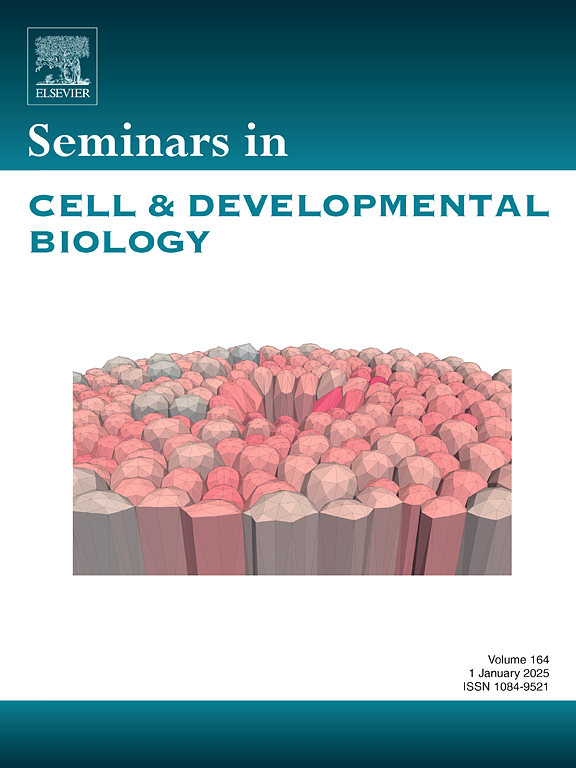非哺乳动物模式生物心脏再生的经验教训。
IF 6
2区 生物学
Q1 CELL BIOLOGY
引用次数: 0
摘要
与哺乳动物不同,某些非哺乳动物物种,如两栖动物和硬骨鱼,在严重损伤后可以再生心脏。研究非哺乳动物心脏再生可以为重新激活成人心脏再生机制提供策略,有可能降低与心力衰竭相关的发病率和死亡率。本文综述了早期使用两栖动物模型研究的主要发现,并重点介绍了硬骨鱼的最新进展,特别关注调节心脏再生内源性机制的信号通路、增强子和转录因子。本文章由计算机程序翻译,如有差异,请以英文原文为准。
Lessons for cardiac regeneration from non-mammalian model organisms
Unlike mammals, certain non-mammalian species — such as amphibians and teleost fish — can regenerate their hearts after severe damage. Investigating non-mammalian heart regeneration could provide strategies to reactivate regenerative mechanisms in adult human hearts, potentially reducing morbidity and mortality related to heart failure. This review offers an overview of key findings from earlier studies using amphibian models and highlights recent advances from teleost fish, with a particular focus on signaling pathways, enhancers, and transcription factors that regulate the endogenous mechanisms of cardiac regeneration.
求助全文
通过发布文献求助,成功后即可免费获取论文全文。
去求助
来源期刊
CiteScore
15.10
自引率
1.40%
发文量
310
审稿时长
9.1 weeks
期刊介绍:
Seminars in Cell and Developmental Biology is a review journal dedicated to keeping scientists informed of developments in the field of molecular cell and developmental biology, on a topic by topic basis. Each issue is thematic in approach, devoted to an important topic of interest to cell and developmental biologists, focusing on the latest advances and their specific implications.
The aim of each issue is to provide a coordinated, readable, and lively review of a selected area, published rapidly to ensure currency.

 求助内容:
求助内容: 应助结果提醒方式:
应助结果提醒方式:


